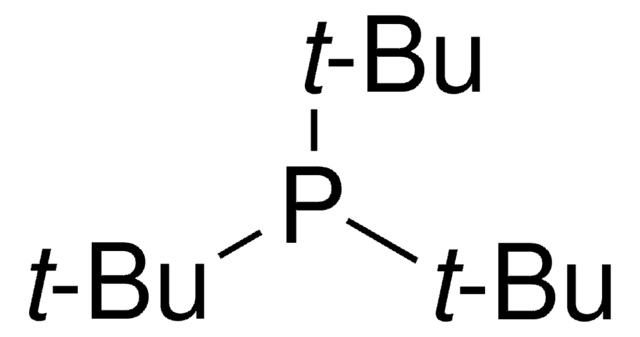373184
Gold
evaporation slug, diam. × L 0.3 cm × 0.6 cm, 99.99% trace metals basis
Sinonimo/i:
Gold Powder, Gold element
About This Item
Prodotti consigliati
Livello qualitativo
Saggio
99.99% trace metals basis
Forma fisica
evaporation slug
Resistività
2.05 μΩ-cm, 0°C
diam. × lung.
0.3 cm × 0.6 cm
Peso
800 mg (one slug)
P. eboll.
2808 °C (lit.)
Punto di fusione
1063 °C (lit.)
Densità
19.3 g/mL at 25 °C (lit.)
Stringa SMILE
[Au]
InChI
1S/Au
PCHJSUWPFVWCPO-UHFFFAOYSA-N
Descrizione generale
Applicazioni
- Gold nanoparticles in diagnostics and therapeutics for human cancer: Discusses the bio-applications of gold nanoparticles, particularly in cancer diagnostics and therapy, highlighting their low immunogenicity and potential for targeted drug delivery (Singh et al., 2018).
- Chemical and physical heterogeneity within native gold: This study provides insights into the heterogeneity of gold and its implications for various scientific studies, which is crucial for understanding gold′s physical and chemical properties in natural settings (Chapman et al., 2021).
- Gold nanoparticles for biology and medicine: Provides a comprehensive overview of the utilization of gold nanoparticles in biological and medical applications, emphasizing their unique properties that benefit drug delivery systems and therapeutic agents (Giljohann et al., 2015).
- Surface plasmon resonance in gold nanoparticles: A detailed review focusing on the surface plasmon resonance properties of gold nanoparticles and their applications in sensing, imaging, and other technologies (Amendola et al., 2017).
Codice della classe di stoccaggio
13 - Non Combustible Solids
Classe di pericolosità dell'acqua (WGK)
nwg
Punto d’infiammabilità (°F)
Not applicable
Punto d’infiammabilità (°C)
Not applicable
Dispositivi di protezione individuale
Eyeshields, Gloves, type N95 (US)
Scegli una delle versioni più recenti:
Possiedi già questo prodotto?
I documenti relativi ai prodotti acquistati recentemente sono disponibili nell’Archivio dei documenti.
I clienti hanno visto anche
Articoli
Can there be an effective strategy for finding breakthrough materials, since they are, by definition, unpredictable? One answer is found in Combinatorial Materials Science techniques, which represent a powerful approach to identifying new and unexpected materials.
Il team dei nostri ricercatori vanta grande esperienza in tutte le aree della ricerca quali Life Science, scienza dei materiali, sintesi chimica, cromatografia, discipline analitiche, ecc..
Contatta l'Assistenza Tecnica.


